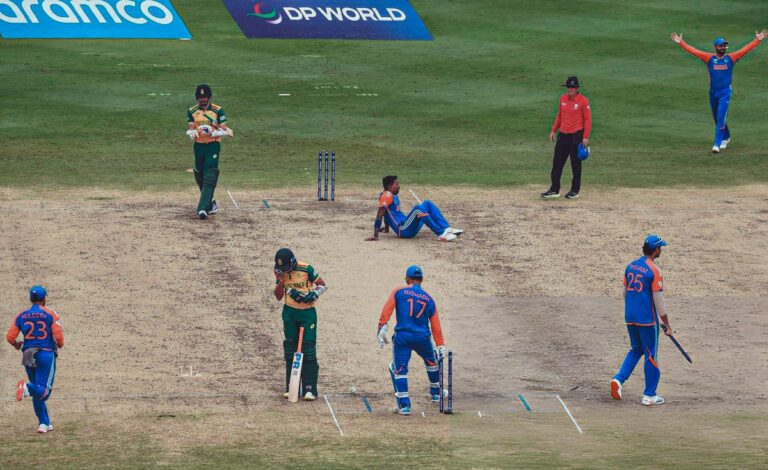Analyzing the Globalization of Cricket
Reddy Anna Book, Reddy Book Club: Cricket, a sport that originated in England centuries ago, has evolved into a global phenomenon with a massive following across various continents. From its humble beginnings as a leisure activity limited to a few countries, cricket has grown into one of the most popular sports worldwide. The journey of cricket’s globalization has been gradual but steady, marked by significant milestones that have propelled the sport onto the international stage.
The development of international cricket competitions, such as the Cricket World Cup and the ICC Champions Trophy, has played a crucial role in promoting the global reach of the sport. These tournaments not only showcase the talent and skill of top cricketing nations but also serve as a platform for emerging cricketing nations to make their mark on the world stage. As the popularity of these competitions continues to soar, cricket continues to transcend borders and unite people from diverse cultures under the common love for the game.
The Influence of Colonialism on the Spread of Cricket
Colonialism played a significant role in the spread of cricket across the globe. The British Empire, in particular, was instrumental in introducing and popularizing the sport in its colonies during the 18th and 19th centuries. As British settlers and officials established themselves in territories such as India, Australia, the Caribbean, and South Africa, they brought the game of cricket with them, using it as a means of recreation, social bonding, and even control over the local populations.
Cricket soon became intertwined with colonial culture and identity, serving as a symbol of British influence and dominance in many regions. Local populations were introduced to the sport through schools, clubs, and military institutions, where it became a way to mimic and even impress the colonizers. Over time, cricket took root in these countries and evolved into a popular pastime that retained elements of its colonial origins. The legacy of colonialism can still be seen today in the enduring popularity of cricket in former British colonies, where the sport holds a special significance as a link to the past and a reminder of the complex history of colonial rule.
The Role of International Competitions in Globalizing Cricket
International competitions play a pivotal role in the globalizing of cricket. These events bring together teams from different countries, showcasing the sport’s diverse talent and creating a platform for cultural exchange. The competitive nature of these tournaments also fuels the interest and passion of fans worldwide, leading to a broader viewership and engagement with the game.
Moreover, international competitions provide an opportunity for emerging cricket nations to prove their worth on a global stage, thus promoting the growth and development of the sport in untapped markets. As more countries participate and gain exposure through these tournaments, cricket becomes more inclusive and accessible to a wider audience, breaking down barriers and transcending geographical boundaries.
The Impact of Television and Technology on Cricket’s Global Reach
The introduction of television and advancements in technology have played a pivotal role in expanding the global reach of cricket. With the advent of live broadcasting, fans from all corners of the world can now enjoy watching their favorite teams and players in action without geographical boundaries. The widespread coverage of cricket matches on television has not only increased the sport’s popularity but has also created a sense of connection among fans worldwide.
The rise of technology has further revolutionized the way cricket is consumed and experienced. From live streaming platforms to interactive mobile apps, fans now have access to real-time updates, player statistics, and highlights at their fingertips. This instant and immersive experience has bridged the gap between cricketing nations and fans, fostering a sense of unity and engagement on a global scale.
The Emergence of Non-Traditional Cricketing Nations
The landscape of cricket has experienced a significant shift in recent years with the emergence of non-traditional cricketing nations making their mark on the international stage. Countries not historically associated with the sport have been steadily climbing the ranks and challenging the traditional powerhouses. This rise of non-traditional cricketing nations has added a sense of unpredictability and excitement to the global cricketing scene.
These nations have brought a fresh perspective to the game, injecting new energy and talent into a sport that was once dominated by a select few. With a growing pool of skilled players and a renewed focus on grassroots development, non-traditional cricketing nations are proving that cricket truly has the potential to become a truly global sport. Their presence in international competitions has not only increased the level of competitiveness but has also broadened the appeal of cricket to a wider audience, paving the way for a more diverse and inclusive future for the sport.
The Economics of Cricket Globalization
The rapid globalization of cricket in recent years has led to a significant increase in the economic impact of the sport. With the proliferation of international competitions and the expansion of broadcasting rights, cricket has become a multi-billion dollar industry that attracts investors, sponsors, and advertisers from around the world. The Indian Premier League (IPL), for example, has emerged as one of the richest and most popular T20 leagues, showcasing the potential for cricket to generate substantial revenue on a global scale.
Furthermore, the economic benefits of cricket globalization extend beyond just the professional level. Grassroots cricket development programs play a crucial role in nurturing young talent, creating employment opportunities, and driving economic growth in local communities. By investing in infrastructure, coaching, and talent identification at the grassroots level, cricket organizations can not only foster the next generation of players but also contribute to the socio-economic development of regions where cricket is gaining popularity.
The Cultural Significance of Cricket in Different Regions
Cricket holds a deep cultural significance in diverse regions around the world. In India, cricket transcends being just a sport; it is a national obsession that unites people from various backgrounds. The sport is infused with tradition and plays a central role in shaping the country’s identity, with stadiums packed to the brim with passionate fans cheering for their favorite teams with unwavering loyalty.
In the Caribbean, cricket is not just a game but a way of life. It is deeply ingrained in the culture, reflecting the region’s history and struggles. The West Indies cricket team symbolizes unity among the islands, and their success on the field is a source of immense pride for the entire Caribbean community. The calypso rhythms and vibrant celebrations that accompany cricket matches showcase the unique cultural blend that defines the region.
The Challenges Faced in Promoting Cricket in Untapped Markets
Cricket, despite its global popularity, faces several challenges in expanding its reach to untapped markets. One of the major obstacles is the lack of infrastructure and facilities in these regions, making it difficult for people to access the necessary resources to play the sport. Additionally, cultural barriers and the dominance of other sports in these areas pose significant hurdles in promoting cricket to a wider audience.
Moreover, the high costs associated with cricket equipment and training sessions can be prohibitive for many individuals in untapped markets, limiting their ability to participate in the sport. This economic barrier further exacerbates the challenge of introducing cricket to new regions and communities. In order to overcome these obstacles and successfully promote cricket in untapped markets, a concerted effort is needed to invest in infrastructure, reduce costs, and raise awareness about the sport’s benefits and opportunities.
The Future of Cricket as a Truly Global Sport
The future of cricket as a global sport shines brightly with vast potential for growth and development in diverse regions worldwide. As the sport continues to captivate audiences around the globe, particularly in emerging cricketing nations, it is poised to break through traditional barriers and become a truly inclusive and universal pastime. With an increasing emphasis on fostering talent at the grassroots level and promoting the game in untapped markets, cricket’s global footprint is set to expand even further in the coming years.
Cricket’s future as a global sport also hinges on continuous innovation and adaptation to modern trends. Embracing technological advancements and leveraging the power of digital platforms will be essential in engaging new audiences and enhancing the overall viewer experience. By staying ahead of the curve and proactively addressing challenges such as competition from other sports and evolving spectator preferences, cricket can solidify its position as a beloved and enduring cultural phenomenon on the world stage.
The Importance of Grassroots Development in Globalizing Cricket
Grassroots development plays a crucial role in the global expansion of cricket. By investing in grassroots programs and initiatives, cricket boards and organizations are able to identify and nurture young talent from a young age. This not only helps in the development of future cricket stars but also contributes to the overall growth and popularity of the sport at the grassroots level.
Moreover, grassroots development fosters a sense of community and camaraderie among aspiring cricketers. Through local leagues, coaching clinics, and school programs, cricket becomes more accessible to a wider range of individuals, breaking down barriers to entry and creating a more inclusive cricketing culture. Ultimately, the investment in grassroots development serves as the foundation for the sustainable growth and success of cricket on a global scale.
What has been the historical evolution of cricket as a global sport?
Cricket originated in England and spread to other countries through colonialism, eventually becoming popular in regions such as India, Australia, and the West Indies.
How have international competitions played a role in globalizing cricket?
Tournaments like the Cricket World Cup and the ICC Champions Trophy have helped to showcase the sport on a global stage and attract fans from all over the world.
How has television and technology impacted the global reach of cricket?
Television broadcasts and online streaming have made cricket more accessible to audiences worldwide, increasing its popularity and fan base.
What are some of the challenges faced in promoting cricket in untapped markets?
In regions where cricket is not traditionally popular, lack of infrastructure, resources, and cultural barriers pose challenges in promoting the sport effectively.
Why is grassroots development important in globalizing cricket?
Grassroots development is crucial for nurturing talent, building interest at the grassroots level, and ensuring the long-term sustainability and growth of cricket as a global sport.







